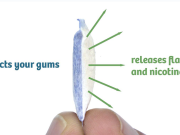Researchers argue that age-gating measures should be implemented to restrict minors from accessing marijuana vaping YouTube videos and social content.
Videos posted to YouTube depicting people using cannabis-containing vaping products as a fun and joyful experience could easily harm young people, researchers from the University of Queensland in Brisbane argue.
Citing arguments similar to the tobacco control movement’s position on nicotine-containing vapor YouTube videos, the researchers argue that age-gating and verification measures are needed to curtail minors from view such content.
The study I refer to was recently published in the journal Addiction.
“There’s been an increase in the potency of cannabis over the last two decades, and more recently, there has been a significant rise in the number of young people who are vaping cannabis,” said Carmen Lim, a Ph.D. candidate who led the study.
“Unrestricted access to the large volume of YouTube videos portraying cannabis vaping as fun and joyful could increase uptake among adolescents,” Lim said.
Dr. Gary Chan, the co-lead author of Lim, said in a statement that many of the YouTube videos about vaping cannabis had no age restrictions, meaning that minors could access them without intervention from the platform.
“Only around 25 percent of cannabis vaping-related videos communicate the potential harms of cannabis vaping,” Chan said. “The videos with a ‘how-to’ theme were viewed more than five million times, and videos with a ‘celebratory’ theme, expressing the fun and joy of cannabis vaping, were viewed more than seven million times.”
A press release from the University of Queensland noted that this was the first study to examine the “availability of cannabis vaping videos on YouTube” since cannabis derivatives, including vapes that contain THC and CBD, became legal in many jurisdictions across the US and North America.
The researchers also note that their study builds on government-sponsored surveys that featured middle and high school-aged students’ responses indicating that they have vaped cannabis products.
“As YouTube has become a popular source of accessing cannabis-related information, we need to reduce the accessibility of cannabis-related content to adolescents,” Chan said.












